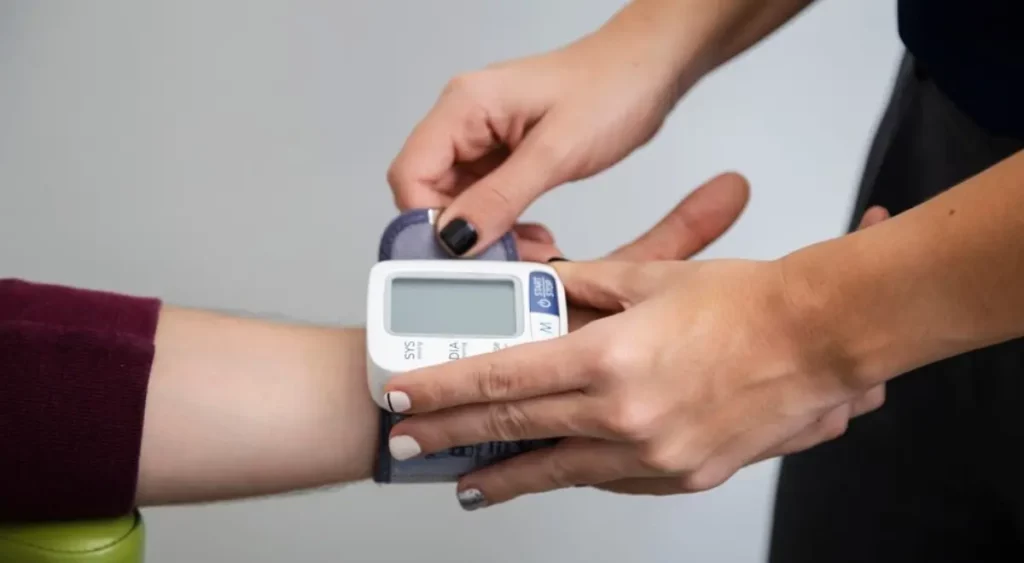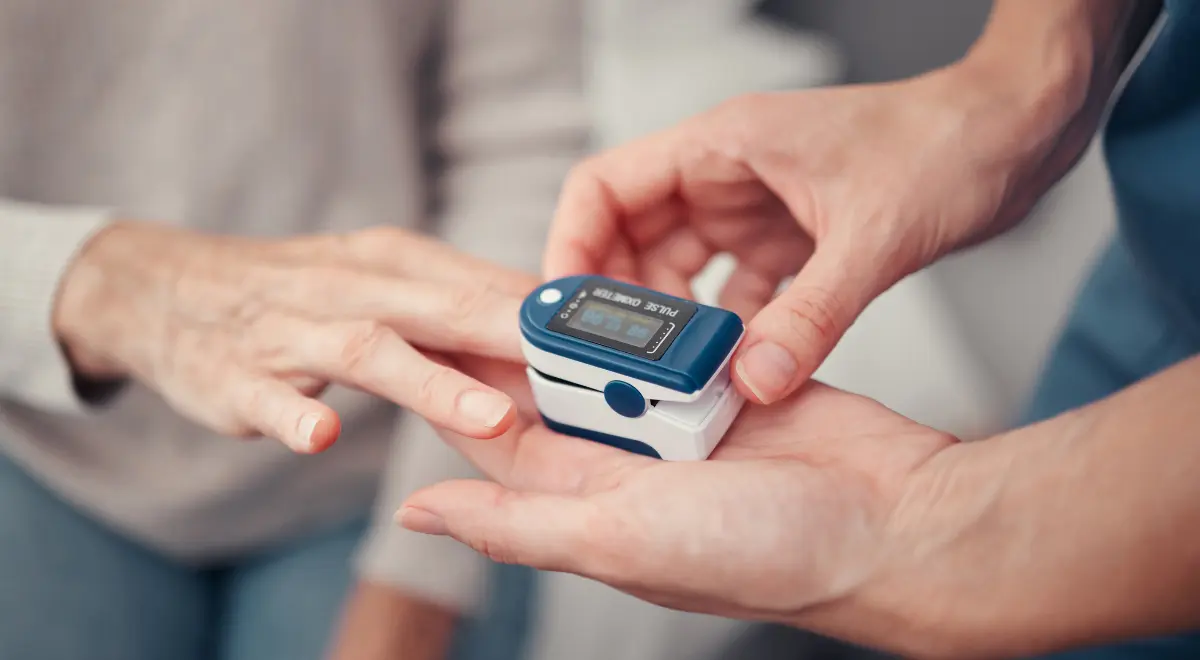The Role of Wearable Technology in RPM

The tireless dedication of healthcare providers and their assurance to deliver constant patient monitoring is remarkable. However, analyzing every possible complication or emergency in real time is a challenging task. To resolve this issue, a transformative solution has emerged in the last few years-remote patient monitoring (RPM) which facilitates health analysis. Integrating advanced wearable technology with RPM empowers healthcare providers to intervene proactively while delivering personalized care and optimizing workflow.
Did you know that last year, the global remote patient monitoring market size was $ 5.2 billion? As stated by Grand View Research, this size is expected to grow at CAGR of 18.6% between 2024 and 2030.
As remote patient monitoring evolves, it has started to reshape healthcare norms. This evolution is benefiting both healthcare organizations and patients. In the new era of RPM, wearable devices are playing a significant role in offering unprecedented opportunities. These modern devices are equipped with advanced sensors empowering patients to monitor health metrics in real time. This in turn allows care staff to save valuable patient’s vital related data for proactive intervention and better outcomes.
Thanks to miniaturization, there is a diverse range of remarkable equipment that seamlessly delivers vital data. Pulse oximeters, cellular medication adherence sensors, glucose monitors, and spirometers to name a few.
The importance of wearable technology in healthcare extends beyond data analysis and monitoring. Let’s explore how wearable devices enhance monitoring of the patients while assisting healthcare providers.
Table of Contents
ToggleHow Wearable Devices are Enhancing Remote Patient Monitoring?
- Real-time Data Analysis: The major advantage of RPM solutions integrated with wearable devices is the ability to gather real-time data. Instead of completely depending on intermittent vitals gathering only during in-clinic visits, a patient’s heart rate and blood pressure levels can be monitored via wearable devices. This continuous stream of data offers a thorough picture of a patient’s health allowing healthcare staff to take prompt actions.
- Early Detection and Prevention: In traditional monitoring systems, certain health metrics may go unnoticed sometimes but wearable devices detect even the smallest of changes quickly. For example, a slight spike in the blood glucose level or decrease in oxygen saturation level is alarming. Remote patient monitoring further allows healthcare providers to manage their roles efficiently, effectively, and in a data-driven manner.
- Improves Chronic Disease Management: Chronic health issues like hypertension, diabetes, and COPD are challenging for patients to manage. Healthcare providers can monitor such individuals with the help of wearable devices. A comprehensive remote patient care technology quickly tracks vital signs and notifies the care staff if any metrics are higher or lower than the normal range. It is an anchor that assists patients develop healthier behavior. Providing information regarding blood pressure levels, and glucose levels, and discussing their present health condition gives a sense of control to your patients. Integrating remote patient monitoring is a proactive approach that not only reduces hospital admissions but also minimizes complications.
- Boosting Patient-Provider Communication: Wearable devices play a significant role in remote patient monitoring while empowering healthcare providers as the data collected can be analyzed instantly. This further bridges the communication gap between the patients and care providers allowing relevant discussion. The real-time information shared fosters a collaborative approach, allowing healthcare providers to cater customized and proactive treatment to patients.
Challenges and Considerations
- Data Privacy and Security with HIPAA Compliance: Remote Patient Monitoring system is vulnerable to cyber threats, data breaches, and a few penalties. This may compromise patient’s confidentialty. Therefore, it is imperative for healthcare providers to implement HIPAA compliance and make sure that the patient data collected is encrypted and remains confidential. The compliance makes it effortless to exchange electronic patient related data among healthcare providers.
- Integration with EHR Systems: Wearables should integrate seamlessly with Electronic Health Record (EHR) systems. The role of wearable devices in remote patient monitoring will be effective only if the integration guarantees a comprehensive view of patient’s health issues.
- Patient Compliance: Patients are of different age groups so some of them won’t be upgraded to the latest technology. Healthcare providers will have to create awareness among them and educate them on how to use wearable devices. This will eventually encourage compliance.
Best Practices for Implementing Wearable Devices in Remote Patient Monitoring Services
- Create Awareness: Awareness is the key to successful implementation of remote patient monitoring with wearable devices. As healthcare providers, you have to make sure your patients understand the importance of the wearables and continuous monitoring. Provide clear guidelines and resources and resolve their queries, if any.
- Start with a Trial Program: Before introducing remote patient monitoring wearables to your patients, healthcare centers should start with a trial program. This will help healthcare professionals analyze and identify potential loopholes. Furthermore, you can tailor the program before a full-scale implementation.
- Choose the Best Devices: Not all wearable devices are the same. As healthcare professionals, you should be abreast regarding the advanced devices but ensure they are reliable, user-friendly, and compatible with your RPM system. Choose wearables that deliver the specific metrics required to monitor your patient.
- Analyze and Tailor: Each individual is suffering from different health-related issues, so their treatment plans will certainly vary. The data collected via wearable devices can be analyzed and used to tailor the treatment plans. Data analsysis can also identify trends making prompt decisions for preventive care.
Elevate Care Delivery with the Latest RPM Tools
With innovative remote patient monitoring solutions, you can empower patients to take proactive steps for managing their health thereby delivering personalized care. Latest wearable devices have escorted a new era of RPM thereby delivering efficient, continuous, and real-time insights that significantly impact patient care. Today, patient-centric healthcare is at its peak. Patients value convenience so avoid frequent hospital visits unless during an emergency. Remote patient monitoring assists patients by making them aware of their health conditions thereby empowering them to be in the driver’s seat during their treatment.
By fostering remote patient monitoring solutions from a reliable provider, like-HealthArc, healthcare centers can enhance patient outcomes, boost engagement, and streamline communication. Connect with us to explore how our digital remote patient monitoring system integrates wearables into practice. Schedule a demo today!
Most recent blogs
Categories
- Advanced Primary Care Management
- Behavioral Health Integration
- Cellular Remote Patient Monitoring
- Chronic Care Management
- Chronic Care Management Billing
- Chronic Care Management CPT Codes
- Chronic Care Management Program
- Chronic Care Management Software
- Digital Health Platform
- Principal Care Management
- Principal Care Management CPT Codes
- Remote Care Programs
- Remote Monitoring Devices
- Remote Patient Care
- Remote Patient Monitoring
- Remote Patient Monitoring Billing
- Remote Patient Monitoring CPT Codes
- Remote Patient Monitoring Devices
- Remote Patient Software
- Remote Therapeutic Monitoring
- Remote Therapeutic Monitoring Billing
- Remote Therapeutic Monitoring CPT Codes
- Telemedicine & RPM
- Transitional Care Management
- Transitional Care Management Billing
- Transitional Care Management CPT Codes
Related Posts
- September 26, 2024 | Read Time: 4 mins




